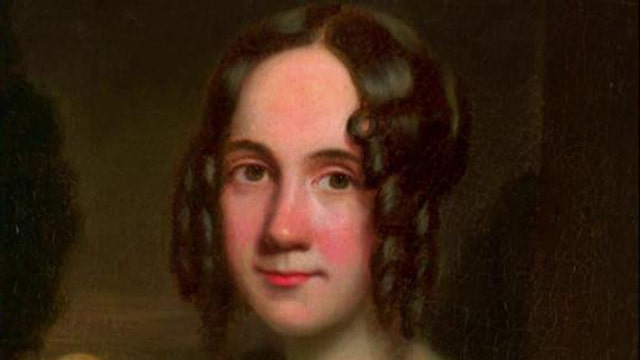Fox Nation looks at the true story of Thanksgiving
Mayflower descendant Lea Filson previews the special on ‘Fox & Friends.’
When Americans sit down to our turkey dinners on Thursday, Nov. 25, we will be marking the 400th anniversary of what has come to be known as the First Thanksgiving.
As every girl and boy learns from an early age, the First Thanksgiving took place in Plymouth, Massachusetts, in the autumn of 1621, when the 52 English settlers known as the Pilgrims and 90 Native warriors from the Wampanoag confederation of Indian tribes shared a three-day harvest feast.
In our cynical age, the wisdom embodied in the story of the First Thanksgiving can get short shrift. Yet at its heart, the First Thanksgiving is a heroic tale about a moment in time when two disparate peoples found a way to come together in harmony and respect.
THANKSGIVING REMINDS US THAT AMERICANS ARE STILL A PEOPLE OF GREAT FAITH
The Pilgrims’ story teaches courage, persistence, love of liberty and gratitude to God. The Wampanoag demonstrated generosity, neighborliness and friendship in their offers of assistance to the newcomers. We and subsequent generations of Americans can continue to learn from the First Thanksgiving and be inspired by it.
Toward that goal, let me propose the revival of a Thanksgiving custom that will help us remember. It bears a curious title, "Five Kernels of Corn." This refers to a 19th-century practice of placing five kernels of dried corn on the Thanksgiving table in remembrance of the First Thanksgiving.
The five kernels of corn on the Thanksgiving table carry several levels of significance.
The tradition got its start in 1820 on Forefathers’ Day, a now mostly forgotten holiday marking the arrival of the Mayflower in Plymouth on Dec. 22, 1620. The occasion was a large dinner following Daniel Webster’s celebrated oration honoring the Pilgrims on the bicentennial of their arrival in Plymouth.
In his speech, Webster reminded his listeners that we are "not mere insulated beings, without relation to the past or the future." We must leave for future generations "some proof that we hold the blessings transmitted from our fathers in just estimation."
Among the blessings he listed was a desire to promote everything that may "improve the hearts of men," a category that surely includes Thanksgiving.
At this grand dinner, held at Plymouth’s imposing new courthouse and served on commemorative china that had been commissioned from a kiln in Staffordshire, England, each diner found five kernels of corn at his place setting. These were humble reminders of the reason for the anniversary. They represented the starving time, when the Pilgrims had little to eat, and legend has it that they survived on a daily ration of five kernels of parched Indian corn.
The legend of the five kernels of corn is almost certainly just that – a legend. There is no mention of it in the journal of Plymouth Gov. William Bradford or other primary sources. But that didn’t stop the practice from taking on a life of its own. Soon five kernels of corn were appearing on Thanksgiving tables across the nation.
CLICK HERE TO GET THE OPINION NEWSLETTER
In 1898, Rhode Island writer Hezekiah Butterworth published a poem titled "Five Kernels of Corn." It concludes:
Five kernels of corn!
Five kernels of corn!
The nation gives thanks for five kernels of corn!
To the Thanksgiving feast bring five kernels of corn!
The five kernels of corn on the Thanksgiving table carry several levels of significance. They are reminders of the hardships and privations that the Pilgrims endured and the courage with which they faced their suffering. They symbolize, too, the kindness offered by the Wampanoag people, who taught the Pilgrims how to plant corn, the crop that was to prove essential to the settlers’ survival.
CLICK HERE TO GET THE FOX NEWS APP
Finally, the five kernels of corn represent the Pilgrims’ gratitude. In the usual telling of the tale, the Pilgrims were grateful for even this meager allotment of food. Led by the governor, they bowed their heads and gave thanks together before their meal.
Today, shades of the Pilgrims and the Wampanoag sit at every American’s Thanksgiving table. This history, and more, is worthy of our remembrance, with grateful hearts, on Thanksgiving Day.



